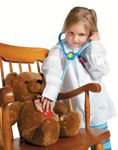Get new employees up to date on safety
Safety and workplace hazards: Here's what to teach your veterinary team's wide-eyed, innocent new recruits, and how to teach it effectively.
The purpose of initial safety training is to make sure new team members are aware of hazards and to give them the ability to perform their tasks. Initial training doesn't make them experts; it's just the primer. You also need to provide new recruits with in-depth instruction when they're ready to actually perform their duties.

Philip Seibert
As a general rule, team members must be trained to deal with hazards before being exposed to them. This doesn't mean they can't observe a procedure if they haven't gone through the second level of safety training, but it does mean they can't be responsible for performing the procedure solo. Here's a rundown on what both levels of instruction should entail.
Initial training
Initial training should focus on general workplace hazards and the safety precautions in place. These include:
- Location of safety materials, including the hospital safety manual and material safety data sheets (MSDSs) for all the practice's hazardous chemicals
- Fire prevention and response procedures (including evacuation and assembly areas)
- Adequate security and violence prevention
- Appropriate areas for eating
- Basic patient and material handling techniques, including proper lifting methods.
These topics can be covered in one or a few sessions, but training should be completed within the first week of employment.
In-depth training
For medical-specific hazards, it's better to incorporate safety instructions into the teaching of the task. Sure, a quick briefing on the hazards of anesthetic gas exposure is a good thing. However, the team members will retain the information much better if they implement the instruction right away as they learn your hospital's anesthetic operations. Explaining how to do a leak check on the anesthetic machine means much more to a person who's standing in front of the machine and getting ready to use it.

Some of the procedures that typically include a safety component are:
- Inhalation anesthesia
- Radiography
- Nursing duties, including animal restraint and animal husbandry
- Infection control, including needle safety and zoonotic disease prevention
- Chemotherapy
- Laboratory procedures, including disease prevention and protection from sharps and reagents.
A new-employee checklist is a great way to make sure that all of these safety issues are covered. (Get employee training checklists for receptionists andreceptionists and technicians and assistantsand assistants.) And, of course, be sure to keep a record of the training.
Philip Seibert, CVT, is an author, speaker, and consultant with SafetyVet in Calhoun, Tenn. Send questions or comments to ve@advanstar.com